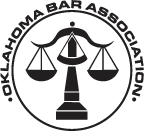OSHA issued new guidance at the end of May that requires almost all employers with more than 10 employees to record cases of COVID-19 among their employees if the following three conditions are met:
- The case is confirmed to be COVID-19;
- The case is work-related – that is, whether the exposure in the work environment either caused or contributed to the contraction of COVID-19; and
- The case involves one or more of these criteria:
- Days away from work
- Restricted work or transfer to another job
- Medical treatment beyond first aid
- Loss of consciousness
- Significant injury or illness diagnosed by a physician or licensed healthcare professional
- Death
If, after a reasonable and good-faith inquiry, the employer cannot determine whether an employee was exposed to COVID-19 in the workplace, the illness does not need to be recorded. The following advice has been given by OSHA in performing a reasonable and good-faith inquiry.
It can be difficult to determine where an employee contracted COVID-19. OSHA’s guidance provides some notes to help employers understand their responsibilities. Most employers can take these three steps:
- Ask the employee how they believe they contracted the illness;
- Discuss the employee’s work and out-of-work activities that may have led to the illness, but make sure to respect that employee’s privacy; and
- Review the employee’s work environment for potential COVID-19 exposure, such as whether other employees in that environment have contracted the illness.
OSHA has also advised that there are some things would weigh in favor of the employee’s COVID-19 being work-related (and therefore reportable by the employer) if:
- Several cases develop among coworkers who work closely together;
- An employee recently had a lengthy close exposure to a person with a confirmed case at work; or
- Job duties include frequent, close exposure to the general public
On the other hand, OSHA believes that the illness would likely not be work-related if:
- The employee is the only employee to contract it in their vicinity and job duties do not include frequent contact with the public, and
- The employee closely and frequently associates with someone outside of work who:
- Has COVID-19,
- Is not a coworker, and
- Exposes the employee during a period when that person is infectious.
If you have any questions about OSHA reporting requirements for COVID-19, please contact Greg Goheen
Disclaimer and warning: This information was published by McAnany, Van Cleave & Phillips, P.A., and is to be used only for general informational purposes and should not be construed as legal advice or legal opinion on any specific facts or circumstances. This is not inclusive of all exceptions and requirements which may apply to any individual claim. It is imperative to promptly obtain legal advice to determine the rights, obligations and options of a specific situation.







